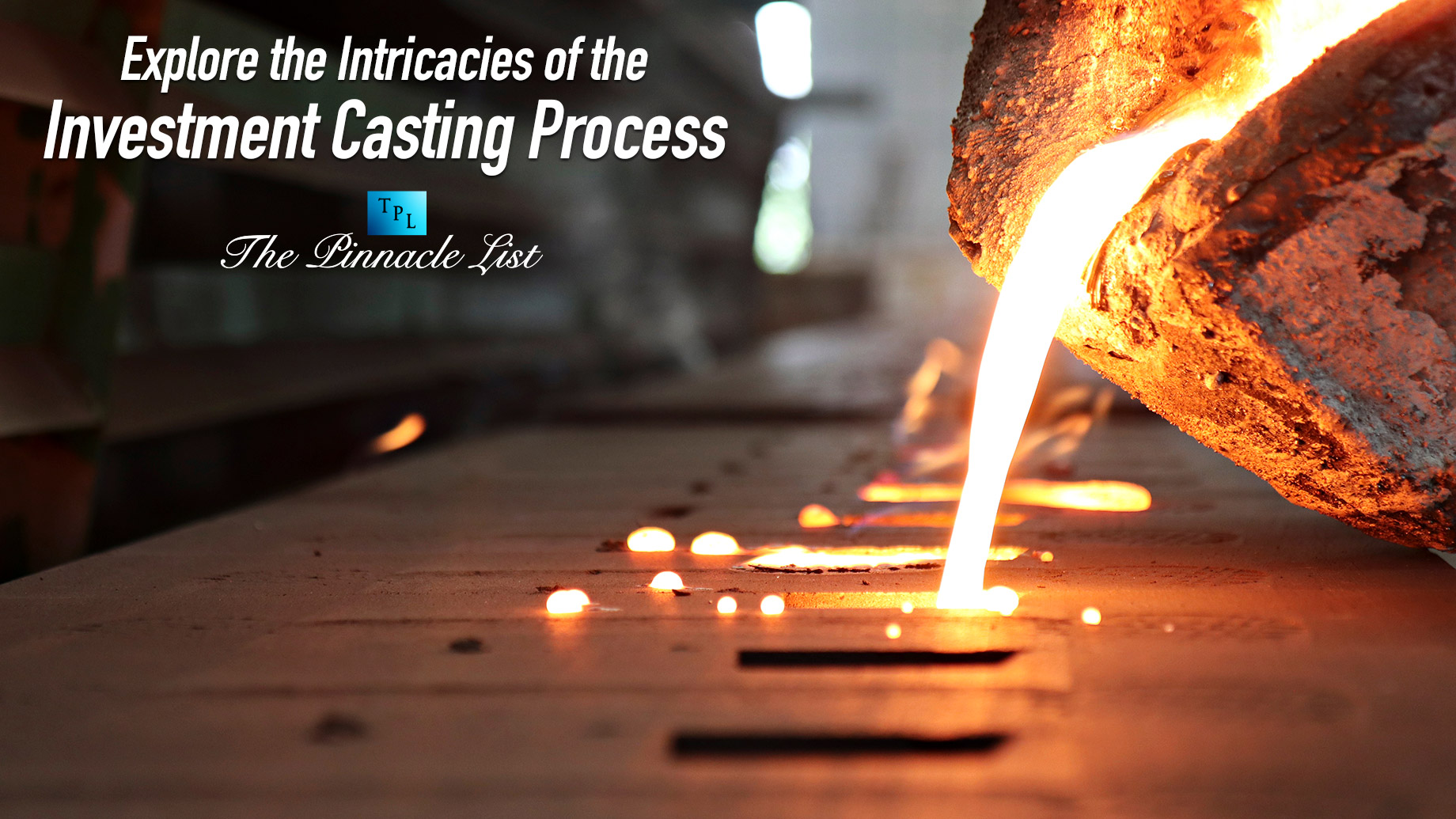
The global investment casting market was valued at USD 16.55 billion in 2022 and is projected to grow at a CAGR of 5.0% from 2023 to 2030 (Grand View Research). This steady growth highlights the importance of the investment casting process across industries like aerospace, automotive, and medical manufacturing. Renowned for its ability to produce intricate metal components with minimal waste, this process remains a top choice for high-precision applications.
From creating detailed wax patterns to achieving flawless metal finishes, investment casting ensures exceptional accuracy and reliability. Whether you’re working on a prototype or scaling up for mass production, this versatile technique can meet your needs.
Are you curious about how this process works and the benefits it offers? Let’s explore its steps and discover why it continues to shape the future of manufacturing.
What Makes Investment Casting Unique
Investment casting stands out among metalworking techniques for its unmatched ability to produce intricate parts. It combines precision and efficiency, making it ideal for industries that demand exact specifications.
The process is adaptable, allowing for the use of various metals such as stainless steel, aluminum, and titanium. This flexibility ensures components meet diverse needs while maintaining durability.
Here are some key features that make investment casting unique:
- Complex designs possible
- Minimal material waste
- Suitable for high-strength alloys
- Repeatable and reliable
One of the most compelling aspects of the investment casting process is its capacity to reproduce fine details. From thin walls to sharp edges, it delivers a level of precision that few other methods can match. This level of accuracy is vital for safety-critical industries like aerospace and medical technology.
The Steps in Investment Casting
The investment casting process involves several meticulous steps to ensure the creation of highly precise and reliable components. Each stage builds on the previous, with no room for error.
Below is an expanded overview of the key steps in this fascinating process:
1. Designing the Wax Pattern
The process begins with crafting a wax pattern, which serves as an exact replica of the final component. These patterns are created using molds or advanced 3D printing techniques for intricate designs.
For efficiency, multiple patterns are often attached to a central sprue, forming what is known as a wax tree. This tree-like structure enables the casting of multiple components in a single pour, saving time and reducing costs. Careful alignment and attachment ensure uniformity in the final products.
2. Building the Ceramic Shell
The wax tree is dipped into a ceramic slurry, which coats the entire surface. Fine sand is applied to the wet layer to add strength and texture. This process is repeated multiple times to build up a durable shell capable of withstanding high temperatures.
Each layer is allowed to dry thoroughly before the next is applied, ensuring the shell’s integrity. The shell must be both heat-resistant and able to capture the fine details of the wax pattern. The strength and precision of the ceramic shell are critical to the success of the entire process.
3. Dewaxing the Mold
Once the ceramic shell is fully hardened, the wax inside must be removed. This step, called dewaxing, involves heating the shell in an autoclave or furnace. The heat melts the wax, which drains out, leaving a hollow cavity that mirrors the original pattern.
Removing the wax completely is essential. Any residue left inside the mold could compromise the final casting, affecting the component’s accuracy and finish.
4. Pouring the Molten Metal
The hollow ceramic mold is preheated to prevent thermal shock when the molten metal is poured. Preheating also ensures the metal flows smoothly into every crevice, capturing intricate details.
Molten metal is carefully poured into the mold. Common choices include stainless steel, aluminum, and titanium, selected based on the application’s needs.
The metal must be poured evenly to avoid air pockets or voids that could weaken the component. Cooling is a gradual process; it allows the metal to solidify while maintaining the mold’s shape and detail.
5. Removing the Shell
Once the metal has fully solidified and cooled, the ceramic shell is broken away to reveal the cast component. This is done using mechanical tools or water jets, depending on the shell’s thickness and the component’s fragility.
After the shell is removed, the casting is separated from the tree structure. Any leftover gates or sprues are cut off and smoothed out.
6. Finishing the Casting
The final step is finishing the cast component to meet exact specifications. This may involve processes like grinding, machining, polishing, or sandblasting. Each step enhances the part’s appearance and functionality.
Components undergo rigorous inspection to ensure they meet design tolerances and quality standards. Any deviations are addressed during this phase, guaranteeing a perfect end product.
Advantages of Investment Casting
Investment casting offers a range of benefits that set it apart from other metalworking techniques. It provides exceptional precision and efficiency, making it a go-to choice for creating intricate components.
One major advantage is the reduction in material waste. The process uses near-net-shape technology, meaning components require little to no additional machining. This saves resources and reduces production costs.
Key advantages include:
- High dimensional accuracy
- Excellent surface finish
- Wide material versatility
- Cost-effective for complex parts
Another standout feature is its repeatability. Manufacturers can produce identical parts consistently, ensuring quality across multiple runs. For guidance on how to determine if precision casting is the right choice for your project, explore this helpful guide on when to use precision casting.
Metal Casting Timeline
The timeline for metal casting can vary depending on the complexity and specifications of the project. Despite its detailed process, advancements such as rapid prototyping have helped reduce production times, making it more efficient for various needs.
Typically, the timeline follows these stages:
- Creating the wax pattern
- Preparing and drying the mold
- Pouring and cooling the metal
- Inspecting and finishing the component
These stages can take anywhere from days to weeks, depending on the project’s requirements. Though the process is thorough, it ensures that each part meets precise specifications. For urgent projects, collaborating with experts can help speed up production without sacrificing quality.
Investment Casting vs. Other Casting Methods
When considering different casting methods, investment casting often stands out as the best choice for precision and complexity. Unlike sand casting, which can be more suited for simpler parts, investment casting offers higher accuracy and can create detailed features that would be difficult or impossible to achieve with other techniques.
In comparison to die casting, investment casting does not require high-pressure equipment, making it ideal for small to medium production runs without high initial costs.
Here are some key differences:
- Higher precision than sand casting
- Complex designs with no need for additional machining
- Suitable for high-performance materials
- Lower initial investment compared to die-casting
These advantages make investment casting the preferred option for industries that require both high precision and cost-effectiveness.
Industries Benefiting From Investment Casting
Investment casting is used across a wide range of industries that require high precision and durable parts. In aerospace, it is often used to produce complex turbine blades and other engine components, ensuring the highest standards for safety and performance.
In the automotive industry, investment casting creates components like valve bodies and transmission parts that must withstand extreme pressures. Medical device manufacturing also benefits from the process, as it can produce components with extremely tight tolerances needed for implants and surgical instruments.
Other industries that rely on investment casting include:
- Oil and gas
- Industrial machinery
- Military and defense
The versatility of investment casting ensures that no matter the industry, this method can meet the most demanding requirements.
Common Materials Used in Investment Casting
Investment casting supports a wide variety of materials, giving manufacturers the flexibility to choose the best metal for their specific needs. Stainless steel, for example, is a popular choice for parts requiring corrosion resistance and strength.
Titanium is another common material, often used in aerospace and medical devices due to its light weight and high durability. Aluminum, with its excellent thermal and electrical conductivity, is frequently used in automotive and electronics applications.
Key materials used include:
- Stainless steel
- Titanium
- Aluminum alloys
- Nickel-based alloys
The range of materials available ensures that investment casting can meet the unique needs of virtually any application.
The Future of Investment Casting
The future of investment casting looks promising, with new technologies and innovations continuing to improve the process. Advancements in 3D printing and additive manufacturing are transforming how wax patterns are made, allowing for even more intricate and complex designs. These technologies also speed up the prototyping phase, making it easier to test and refine designs before moving to full-scale production.
Additionally, the increasing demand for sustainable manufacturing practices is pushing investment casting to become more environmentally friendly. Companies are developing ways to recycle materials and reduce energy consumption during the casting process.
Key trends include:
- Integration of 3D printing for patterns
- Development of green casting methods
- Enhanced automation and robotics
- Use of advanced alloys
The Investment Casting Process: A Precision Solution
The investment casting process is an invaluable technique for producing high-precision components with complex geometries. Its ability to create intricate designs with minimal waste makes it ideal for industries requiring tight tolerances and reliability.
For more fascinating articles on a range of topics, take a moment to browse through the rest of this site!
